Reproduction and Modification in Plants | Term 1 Unit 5 | 7th Science - Questions Answers | 7th Science : Term 1 Unit 5 : Reproduction and Modification in Plants
Chapter: 7th Science : Term 1 Unit 5 : Reproduction and Modification in Plants
Questions Answers
Evaluation
I. Choose the appropriate answer.
1. Vegetative propagation by
leaves takes place in
a.
Bryophyllum
b.
Fungi
c.
Virus
d.
Bacteria
Answer : a) Bryophyllum
2. Asexual reproduction in yeast
is
a.
Spore formation
b.
Fragmentation
c.
Pollinationd.
d.
Budding
Answer : d) Budding
3. Reproductive part of a plant
is
a.
Rootb.
b.
Stem
c.
Leafd.
d.
Flower
Answer : d) Flower
4. Pollinators are
a.
Windb.
b.
Water
c.
Insectd.
d.
All the above
Answer : d) All the above
5. Climbing roots are seen in
a.
Betelb.
b.
Black pepper
c.
Both of themd.
d.
None of them
Answer : c) Both of them
II. Fill in the Blanks.
1. The male reproductive part of a flower is androecium
2. Ovary is
the basal swollen part of the Gynoecium.
3. After fertilization the ovule becomes seed
4.
Breathing roots are seen in mangrove plants.
5.
Onion and Garlic are example of bulb.
III. True (or) False, write the correct answer for the false statement.
1.
A complete flower has four whorls.
2.
The transfer of pollen to the stigma is known as pollination.
3.
Conical shaped root is carrot.
4.
Ginger is an underground root.
Ginger is an underground stem.
5.
Leaves of Aloe vera are fleshy and store water.
IV. Match the following:
1. Petal- Opuntia
2.
Fern- Chrysanthemum
3.
Phylloclade- Attracts insect
4.
Hooks- Spore
5.
Sucker- Bignonia
Answer :
1. Petal - Attracts insect
2. Fern - Spore
3. Phylloclade - Opuntia
4. Hooks - Bignonia
5. Sucker - Chrysanthemum
V. Very short answer.
1. Write two types of
reproduction in plants.
The two types of reproduction in plants are sexual and asexual
reproduction.
2. What are the two important
parts of a flower?
The two important parts of a flower are androecium and
gynoecium.
3. Define – pollination.
The process by which pollen grains reach stigma is called as
pollination.
(Transfer of pollen grains from anther to stigma is called
pollination)
4. What are the agents of
pollination?
The agents of pollination are wind, water, insects, birds and
animals.
5. Give example for
a. Corm b. Tuber
a. Corm - Colocasia
b. Tuber - Potato
6. What is tendril?
In climbers, the leaf of plant are modified into elongated
structure to help the plants to climb efficiently. They are called tendrils.
7. What are thorns?
In Opuntia the leaves are reduced to small spines with less
surface area. It is an adaptation to reduce transpiration.
VI. Short answer.
1. Differentiate bisexual flower
from unisexual flower?
Flowers having both androecium and gynoecium are called bisexual
flowers.
Flowers having either androecium or gynocium are called
unisexual flowers.
2. What is cross pollination?
Pollen grains are transfered from the anther of one flower to
the stigma of another flower of the same kind or different plant. This is
called cross pollination.
3. Write notes on phyllode.
In Acacia auriculiformis petioles expand to form leaf like
structure. They carry out the function of leaf (photosynthesis).
VII. Answer in Details.
1. Write a brief account on
pollination.
Transfer of pollen grains from anther to stigma of a flower is
called pollination.
Transfer of pollen grains from male flower to the female flower
by us is called artificial pollination. However in nature there are many ways
in which pollen grain reach the stigma of a flower and it is called natural
pollination.
There are two types of pollination :
1) Self – pollination
2) Cross - pollination
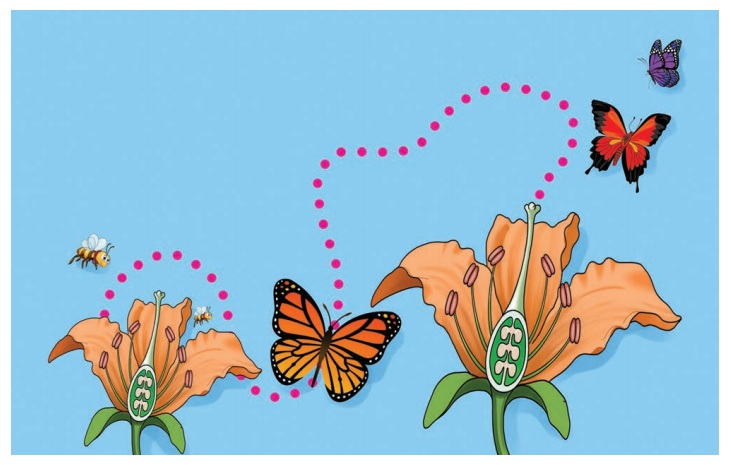
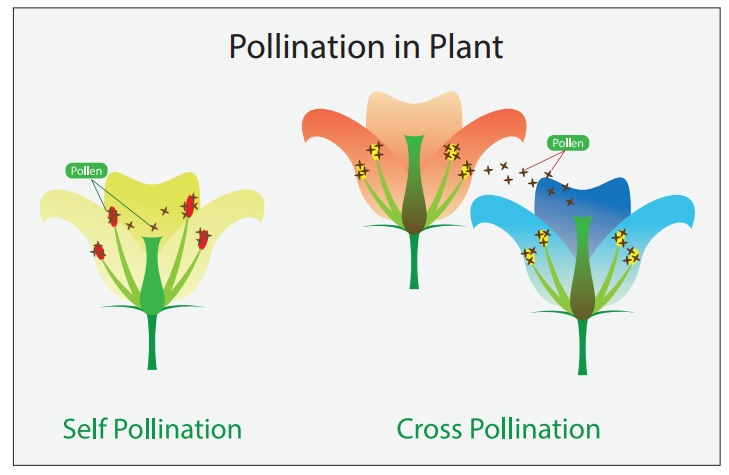
Pollen grains are transferred from one anther to the stigma of
the same flower or another flower of the same plant. This is called self
pollination. This process doesn't need any pollinators. Plants do not need to
produce pollen grains in a large quantity for self pollination.
Pollen grains are transfered from another of one flower to the
stigma of another flower of the same kind or different plant. This called cross
pollination. Plants need to produce pollen grains in larger quantities to
increase the chance of pollination. It requires various pollinators like wind,
water, insect and animals.
2. Explain the underground stems.
In most of the plants stem grows above the ground but there are
some stems that grow under the ground. They store food for the plant stem.
There are four types of underground stems :
i) Rhizome ii) Corm iii) Tuber iv) Bulb
i) Rhizome :
It is an underground thick stem with node and intemodes with
scale leaves at the node. It grows horizontally and has an irregular shape.
Rhizome have buds.
They give rise to new stem and leaf.
Eg. Ginger and
Turmeric
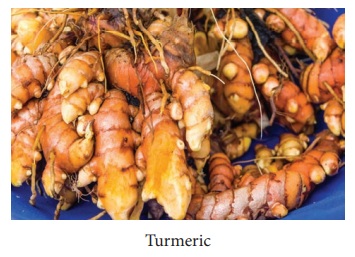
ii) Corm :
This underground stem is round in shape and flat at the top and
bottom. It is a condensed form of rhizome and bears one or more buds in the
axils of scale leaves. Daughter plants arise from their buds. Eg. Colocasia
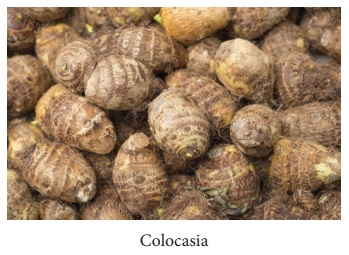
iii) Tuber:
It is an enlarged, spherical underground stem that store food.
It has many dormant buds on its surface known as "Eye". If we plant a
part of tuber with the bud, it grows in to a new plant.
E.g. Potato
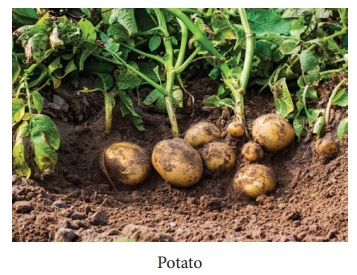
iv) Bulb :
It is a condensed stem which is disc like and stores food in the
fleshy leaves. The bulb has two types. (1) Fleshy leaves (2) Scaly leaves. The
upper part of the stem has a terminal bud and it is covered by many scale
leaves. The inner fleshy leaves store food as seen in Garlic and Onion.
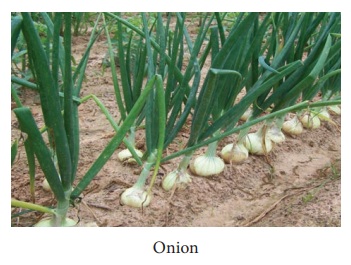
VIII. Higher Order Questions.
1. Ginger is considered to be a
stem, not a root. Why?
Ginger is considered to be stem because it has nodes and
intemodes. Node is covered with scale leaves and buds.
2. What will happen if pollen
grain of rose gets deposited on stigma of lily flower? Will pollen germination
takes place? Why?
No, because both flowers are different species. There will be no
germination of pollen grains.
IX. Assertion and Reasoning types of Question.
1. Assertion
– Pollination and fertilization in flowers, produces fruits and seeds.
Reasoning –
After fertilization the ovary becomes fruit and ovule becomes seed.
a.
Assertion is correct, Reasoning is incorrect.
b.
Assertion is incorrect, Reasoning is correct.
c.
Assertion is correct, Reasoning is correct.
d. Assertionis incorrect, Reasoning
is incorrect.
Answer: 1) c. Assertion is correct, Reasoning is
correct.
2.
Assertion – The example of conical
root is carrot.
Reasoning
– It is an adventitious root modification.
a.
Assertion is incorrect, Reasoning is correct.
b.
Assertion is incorrect, Reasoning is incorrect.
c.
Assertion is correct, Reasoning is correct.
d.
Assertion is correct, Reasoning is incorrect.
Answer: 2) d. Assertion is
correct, Reasoning is incorrect.
X. Picture Based
question.
i. Observe the picture and draw the labels.
Parts of a Flower
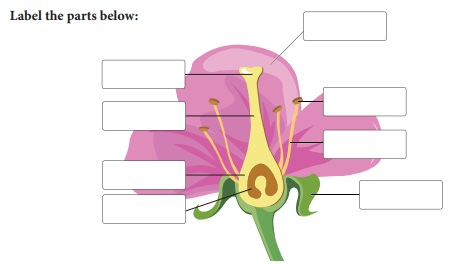
Stigma Pistil Filament Ovule Sepal
Petal Stamen Style Anther Ovary
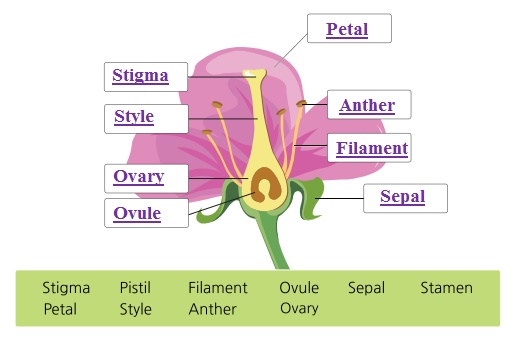
ii. Identify the four plants shown in the following Name the different modification in each of them.
Name - Modification
1. Banyan - Mechanical
support
2. Nepenthus - Trap
3. Eichhomia - Sub-aerial
modified root
4. Stolon - Wild Strawberry
Related Topics